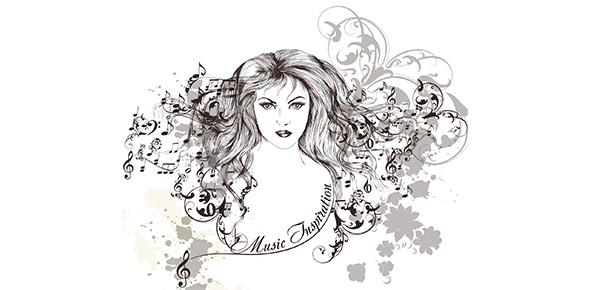Related Flashcards
Cards In This Set
| Front | Back |
|
Chapter 1
|
How can we define documentary?
|
|
Enter the Golden Age:
|
The current Golden Age of documentaries began in the 80s. An abundance of films has breathed new lifeinto an old form and prompted serious thought about how to define this type of filmmaking.
|
|
Defining documentary:
|
...Creative treatment suggests the license of fiction, wheras actuality reminds us of the responsibilities of the journalist and historian. It draws on and refers to historical reality while representing it from a distinct perspective.
|
|
What are the three commonsense assumptions about documentary?
|
1. Documentaries are about reality; they're about something that actually happened - Documentary films speak about actual situations or events and honor known facts; they do not introduce new, unverifiable ones. Whereas fictional films are allegorical, docs create one world to stand in for a historical one. But films that distort facts, alter reality or fabricate evidence threaten their own status as a documentary.
2. Documentaries are about real people - docs are about real people who do not play or perform roles. Instead they play or portray themselves (real people present themselves in everyday life in ways that differ from a consciously adopted role or fictional performance. People do not continue to present themselves in the same way as interaction develops; they modify their behavior as the situation evolves. 3. Documentaries tell stories about what happens in the real world - Documentaries tell us what leads up to actual events or real changes. They tell us about how things change, and who produces these changes. The creative treatment of actuality allows 'treatment' to include story telling, but such stories must meet criteria to qualify as documentaries. Documentary is not a recreation of reality, it is a representation of the world. |
|
Is Nanook of the North a documentary?
|
It's classification as a documentary hinges on two things: 1) the degree to which the story Flaherty tells so carefully matches the way of the Inuit, even if these ways are revived from the past, and 2) the way Nanook embodies a spirit and sensibility that seems as much in harmony with a distinct way of Inuit life.
|
|
What are the 4 ways in which documentary is understood?
|
1. An institutional Framework: "Documentaries are what the organizations and institutions that produce them make". Institutions contribute to the reality of what gets made and how it looks. They often impose standards and conventions on the work they support, and their goals and criteria change over time. Without them, fewer docs would reach their intended audiences.
2. A community of practitioners: Filmmakers share a common, self-chosen mandate to represent the historical world rather than to imaginatively invent alternative ones. They gather at film festivals, and contribute articles and interviews. Like other professionals, they speak a common language, and share distinct and common problems. 3. A corpus of texts: conventions, periods, movements and modes: We can consider documentary a genre like the western or sci-fi. To belong to a genre, it has to exhibit conventions shared by films already regarded as documentaries or westerns. Another convention is logic --- the logic organizing a doc film supports an underlying assumption about the historical world. 4. A constituency of viewers: assumptions, expectations, evidence, and the indexical quality of the image: The final way to consider the fluidity of the doc film involves the audience. Documentaries are: -About reality -About real people -Stories about what really happened ...some notes about the indexical image: recording instruments register the imprint of things with great fidelity. It gives these imprints value as documents. This sense of a document bears a strict correspondence to what it refers to as indexical quality. |
|
What are the six modes of documentary filmmaking?
|
1. Poetic mode: Emphasizes visual associations, tonal or rhythmic qualities, descriptive passages, and formal organization. This mode bears a close proximity to experimental, personal, and avant-garde filmmaking.
2. Expository mode: Emphasizes verbal commentary and argumentative logic. This is the mode that most people associate with in documentary. 3. Observational mode: Emphasizes a direct engagement with the everyday life of subjects as observed by an unobtrusive camera. 4. Participatory mode: Emphasizes the interaction between filmmaker and subject. Filming takes place by means of interviews or other forms of even more direct involvement from conversations to provocations. 5. Reflexive mode: Calls attention to the assumptions and conventions that govern doc filmmaking. Increases our awareness of the constructedness of the film's representation of reality. 6. Performative mode: Emphasizes the subjective or expressive aspect of the filmmaker's own involvement with a subject; it strives to heighten the audience's response to involvement. Rejects notions of objectivity. |
|
Chapter 5
|
How did Documentary Filmmaking Get Started?
|
|
The mythic origin in early cinema:
|
A standard way of explaining the rise of documentary involves the story of the cinema's love for the surface of things, its uncanny ability to capture life as it is, an ability that served as a hallmark for early cinema and its immense catalog of people, places, and things culled from around the world.
The first myth is 1) the filmmaker was a hero who travelled far and wide to reveal hidden corners and remarkable occurrences that were part of our reality; and 2) film images possessed the power to reproduce the world by dint of a photochemical process in which light energy passed through a lens onto a photographic emulsion. These two qualities form the mythic foundation for the rise of documentary film. |
|
What is 'science' and 'spectacle'?
|
Both science and spectacle contribute to documentary film development but are hardly synonymous with it...
First, the capacity of the photographic image to generate a precise replica of aspects of its source material forms the basis for scientific modes of representation. Second, spectacle also differs from documentary. "Cinema of Attraction" relied on the image as document to present viewers with sensational sketches and exotic and unusual depictions of everyday life. |
|
What are 4 key elements that form the basis for documentary film?
|
1. Poetic experimentation: The filmmaker's way of seeing things took higher priority than demonstrating the camera's ability to record what it saw accurately; an artistic avant-garde form. John Epstein's term photogenie referred to what the film image offered that suplemented or differed from what it represented.
2. Narrative Story Telling: Style couples with plot to tell a story - be it factual or fabricated. Narratives resolve conflict and achieve order, and correspond to the three ways 'realism' applies to documentary: 1) physical realism (represents what actually happened), 2) psychological realism (inner states of characters), and 3) emotional realism (create an appropriate emotional state). 4. Rhetorical Oratory: Sought to speak about the historical world - addressing questions of what to do, what really happened, or what someone or something was really like - in ways that convey a particular perspective. |
|
What is Kino Eye?
|
Vertov's style of nonfiction cinema:
-Editing during observation -Editing after observation -Editing during filming -Editing after filming -Guaging by sight -The final editing |
|
Chapter 8: pages 212-228
|
How have documentaries addressed social and political issues?
|
|
People as victims or agents?:
|
Brian Winston argued that 1930's documentary fimmakers in Great Britain took a romantic view of their working class subjects; they failed to see the worker as an active, self-determining agent of change. Instead, the worker suffered from a "plight" that others, namely government agencies, should do something about (Housing Problems, 1935).
The urge to represent the worker romantically or poetically denies the worker a sense of equal status with the filmmaker. The filmmaker kept control of the act of representation; collaboration was not an option. This was known as the "tradition of the victim". Not all documentaries address social and political issues directly. Poetic documentaries may seem far removed from social issues; this may be a political choice on one level, but it shifts our primary attention to other considerations. |
|
Constructing National Identity:
|
The construction of national identities involves the construction of a sense of community. "Community" invokes feelings of common purpose and mutual respect. On the other hand, the most insidious forms of ideology may be precisely the ones that make community seem natural or organic. The sense of commununity always comes at the price of values deemed deviant, subversive, or illegal.
|






